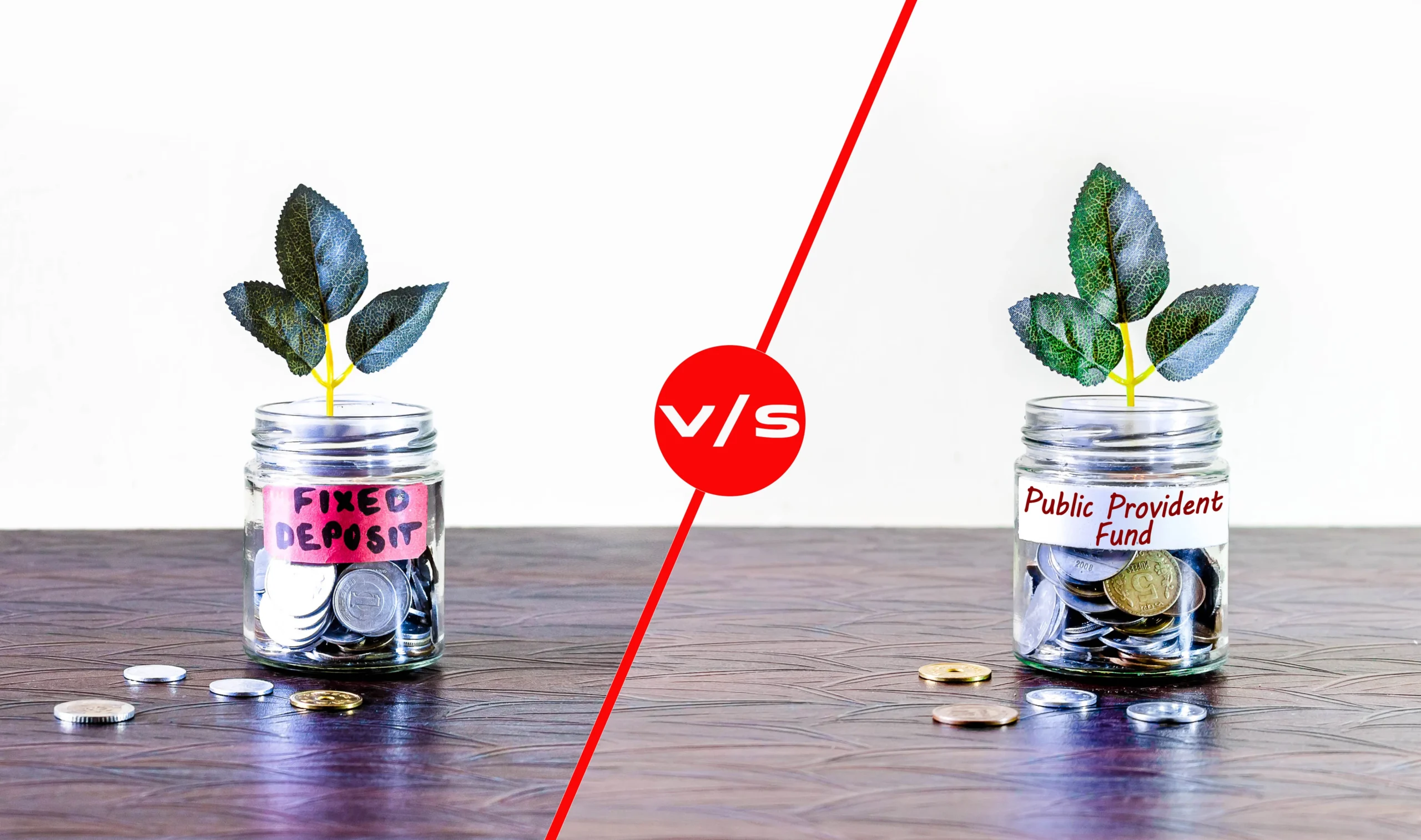When it comes to safe investment options in India, PPF and FD are among the most preferred. They both offer a plethora of benefits and are attractive choices, regardless of one’s income. These financial instruments come with some unique features and are ideal options for risk-averse investors.
The following comparison between PPF and FD will help you get a better understanding of which one you should go for:
PPF vs FD:What are they?
- Fixed Deposit: FDs are offered by banks, post offices, and NBFCs. Customers are required to make a lump sum investment for the chosen tenure, and the interest rate is fixed throughout the tenure of the scheme.
- Public Provident Fund: PPF was launched by the Indian government in 1968. It is offered by nationalised banks, post offices, and certain private banks. It has a fixed tenure of 15 years and offers interest as per the rate set by the government.
PPF vs FD: The main differences
| FD | PPF | |
| Eligibility | Open to NRIs, firms, trusts, HUFs, and resident Indians | Open only to resident Indians |
| Joint account | Allowed | Not Allowed |
| Tenure | Flexibility of tenure (7 days to 20 years) | Fixed tenure of 15 years |
| Liquidity benefit | Liquidity is better than PPF | Liquidity is low |
| Tax exemption | Tax exemption can be claimed up to Rs 1.5 lakh | You get triple exemption – no wealth tax, tax-free returns and deduction on deposits. |
PPF vs FD: Which one should you choose?
In the case of PPF, customers can make premature withdrawals and also avail of a loan against the invested amount (after completion of the first three years). However, it offers low liquidity. On the other hand, FD offers better liquidity and allows flexibility of tenure. The choice between PPF and FD is, therefore, largely dependent on your desired tenure and the need for liquidity.
PPF vs FD: What are the interest rates?
While PPF interest rates are fixed by the government, interest rates on FD are determined by the bank in question. Generally, PPF offers a better interest rate as compared to an FD. The PPF vs FD interest rate can be calculated using the PPF vs FD calculator.
Additional read: Difference Between NSC & FD
Conclusion
Visit our website to know more about PPF account and FD and avail of the product that best suit your needs and goals.





















































